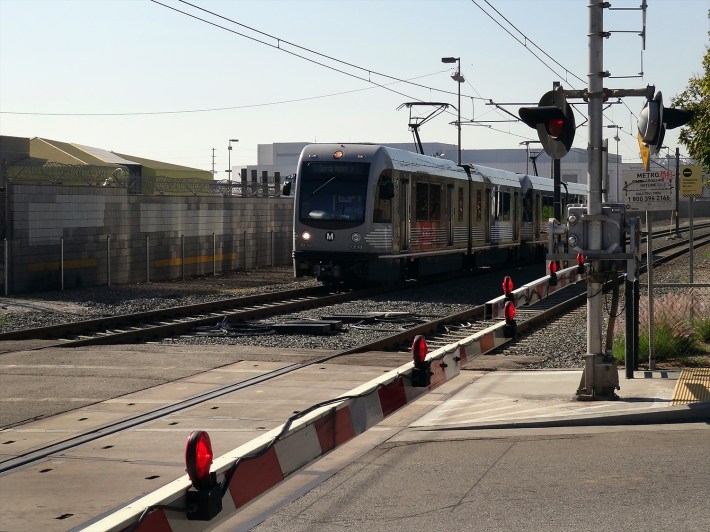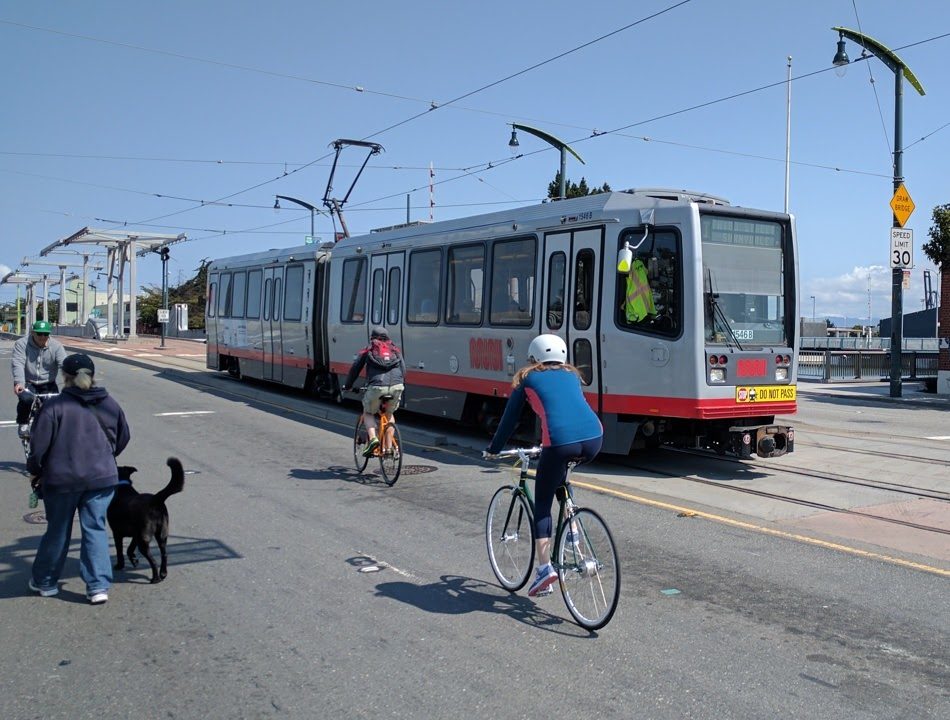Note: GJEL Accident Attorneys regularly sponsors coverage on Streetsblog San Francisco and Streetsblog California. Unless noted in the story, GJEL Accident Attorneys is not consulted for the content or editorial direction of the sponsored content.
Muni launched an express bus, the 15 Bayview Hunters Point Express Line, to downtown this week. The agency also reactivated the T Third Muni rail line to Embarcadero.
From an SFMTA release:
Due to its location on the Southeastern part of San Francisco, Bayview residents often endure long travel times to get to jobs, health care, education, and other essential trips whose destination is not within the neighborhood. The long travel times also mean that the odds of encountering congestion or a traffic collision increase, having an impact on reliability. Addressing long and unreliable travel times is the most consistent request we receive from residents when identifying needed improvements. The Bayview-Hunters Point Downtown Express directly responds to this feedback by following the community’s leads in identifying the best way to link the Bayview neighborhood to Downtown San Francisco.
While it's certainly great that the people of the Bayview will have the 15 Express alternative, it's also an admission that the city's design and operation of the T Third rail line is an abomination. It takes 35 minutes just to get from the Embarcadero to Third and Williams on the T--about five miles.
That's an average of 8.5 mph, with trains that are capable of going 55.
Meanwhile, the county spent some $30,000 on outreach about ways to improve transit service to the area. The 15 Express was their answer.
But as Livable City's Tom Radulovich pointed out in a post on social media: "Bringing back the 15 Third makes some transportation sense and I support it. However, spending something like $700 million to replace a bus line with a light rail line, and then having users lobby to get the bus back, indicates something went wrong with the rail project."
Indeed, short of pulling off the trains' wheels, it's hard to imagine what more Muni could have done to sabotage the T Third rail line, which started operating in 2007.
Stations are spaced so close it seems sometimes as if the back of the train is still in one station as it pulls into the next. Trains leave one station, inch forward, stop again, and wait at the next traffic signal for interminable amounts of time. Trains stop at nearly every traffic light, subservient to cross traffic and left-turning cars. It's common to watch trains full of people, mostly of color, stopped at intersections to allow one white driver of a luxury car to pass.
As SFMTA director Jeffrey Tumlin has said, operating transit in this way is "fundamentally inequitable." But why mince words: given the typical demographics of private car owners versus transit users, it's racist.
The tracks need fences to prevent intrusions and allow trains to operate safely at full speed. Stations need to be properly spaced. There should be crossing gates and traffic signal preemption to allow trains full of people to move unencumbered. Automobiles should never have priority over transit riders (in a bus or a train) at an intersection; if a train is coming, motorists just have to wait. And the streetscape around the T should be engineered to allow safe and inviting bicycling and micromobility to stations, which studies show will give riders better door-to-door times than having stations so closely together.

The long-delayed Central Subway should open sometime in 2022. That $1.5 billion project is supposed to be the last phase of the T Third, and it should help trains reach downtown faster. But what a shame it would be to spend all that money on all that infrastructure just to continue running a rail line so badly that people in the city's undeserved southeastern communities make better time on a bus that's stuck in traffic. If the city is at all serious about equity, not to mention its "transit first" mandates, then it must fix the T.





